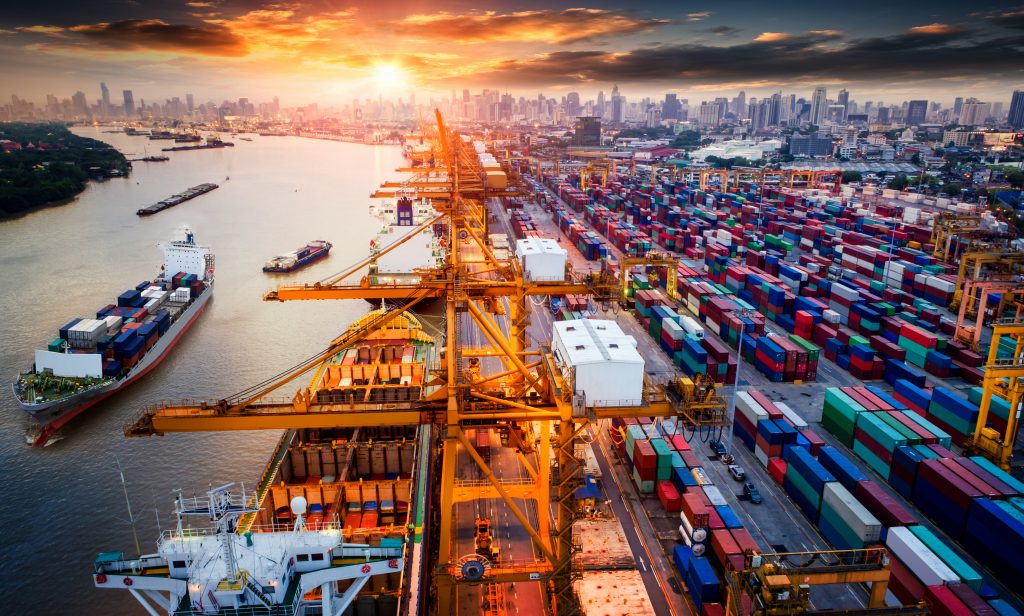Freight, Logistics and Warehousing
Moving In All Directions – Fast
Flying cars, laser pistols and colonies on Mars? Science fiction has a tendency to zero in on obvious targets. But it’s often the more benign aspects of life that skip along quicker than you could have anticipated. Flying delivery drones, automated warehouses and self-driving trucks? There’s nothing fictional about these developments, or disruptions they’re causing to supply chains.
Track and trace
The information revolution has brought about fundamental shifts in how companies relate to their customers. The keyword here is information.
Andrew Shaw, transport and logistics leader for Africa at PricewaterhouseCoopers (PwC), sees big changes taking place in the retail and last-mile sector. “People want to know where their goods are, and the reduction in cost of digitised solutions and track-and-trace is making the information much more accessible, meaning people can access information about the supply chain they couldn’t before,” he says.
This means more potential for communication and interaction between retail, warehouse and manufacturing, allowing for a more fluid, efficient and cost-effective chain of supply.
“If you’ve got a retailer at the end of the chain,” says Shaw, “and something’s moving very rapidly, they may want to look up the chain to see how many units are in stock. The idea is that they’ve already got the answer because that data set has been pushed down the chain. Then potentially – and this in the norm in Europe now – you can push that up the chain to the manufacturers so they can see what’s happening in terms of demand.”
Smart storage
It’s all well and good making something at one end of the chain and selling it at the other, but what about the middle step? One area where local players are making big strides is in warehousing. Enhanced data collection, automated picking and drone surveillance are all helping to make this step more efficient and cost effective.
“If you look at the areas where South African movers can cut costs in the logistics supply chain,” says Shaw, “generally these are no longer in the road-transport space; costs have really been eked out there by way of things like scheduling software and new-generation trucks with better fuel efficiency. Inventory and warehousing is a space where you can push down costs. If digitisation across that area will drive down costs, then these companies will invest in it and sell it to their customers. Cheaper labour costs relative to first-world markets mean we’re unlikely to see fully automated factories, says Martin Bailey, Industrial Logistics Systems executive. “But this is being driven by the need to be faster and more accurate, and by operators who are tired of labour issues. An added big driver is theft – robots don’t steal.”
Immediate gratification
The disruptive influence and success of companies like Uber have also impacted customer expectations. With the growth of online retail, same-day delivery is becoming a reality for individual purchases (and people are beginning to expect similar service in business-to-business transactions, too).
“Customers want it now, and they want an infinite selection,” says Bailey. “Those companies that achieve shorter lead times will achieve better customer satisfaction and growth.” He adds, however: “Clearly customers don’t expect everything to be fast. Often, in-full on-time is more important.”
Shaw concurs, citing the example of Amazon, which is increasingly competing with the bigger retailers in the United States, and is focusing more on providing competitive delivery to match its online services.
“Amazon is realising that their digital solution isn’t going to keep them ahead of the pack for long,” he says. “Anyone can create an eBay or Amazon solution where they can sell products that are owned by others; they’re recognising that their competitive advantage is in the delivery chain. The faster they can get that product to the customer, the more likely they are to come back and buy from the site.” All over the world logistics players are grappling with the last-mile delivery puzzle; and how they respond will separate the wheat from the chaff, so to speak.
Eye in the sky
Surely the easiest solution to quick delivery is to dispense with these out-dated tar-bound vehicles and just use drones, right? Well, yes and no. Drones are making waves in the logistics business, but at the moment they simply don’t have the carrying capacity – or, locally, the cost-effectiveness – to replace traditional delivery methods.
“In theory drones are ideal, for example, to deliver relatively small loads, such as pharmaceuticals, to rural areas,” says Bailey. “The problem is the rural areas presently can’t afford the technology. As the technology gets cheaper, it may expand. Military is the big growth area, along with surveillance.”
“One of the major benefits of drones is real data – quite quickly – on where you are with respect to infrastructure development and maintenance,” explains Shaw.
“Big asset owners like road and rail movers struggle to know the condition of their assets at any point in time, and drone technology gives you the ability to assess this.”
Blurred lines
With the industry changing so rapidly, incumbent players will have to watch more than their regular competitors. A distinct trend that runs through all of this is the emergence of start-ups targeting steps in the supply chain.
“People who have never really played in this space but who have digital solutions have started to take market share away from the big players,” says Shaw. As retailers start introducing their own logistics functions, the blurring of the line between customers and competitors compounds this.
“The logistics environment is being changed by people who don’t necessarily come from a logistics background,” he says. “How these outsiders adapt their tech savvy to the complexities of supply-chain management, and how the incumbents respond to these changes and disruptions will determine their sustainability in a rapidly evolving economy.“





